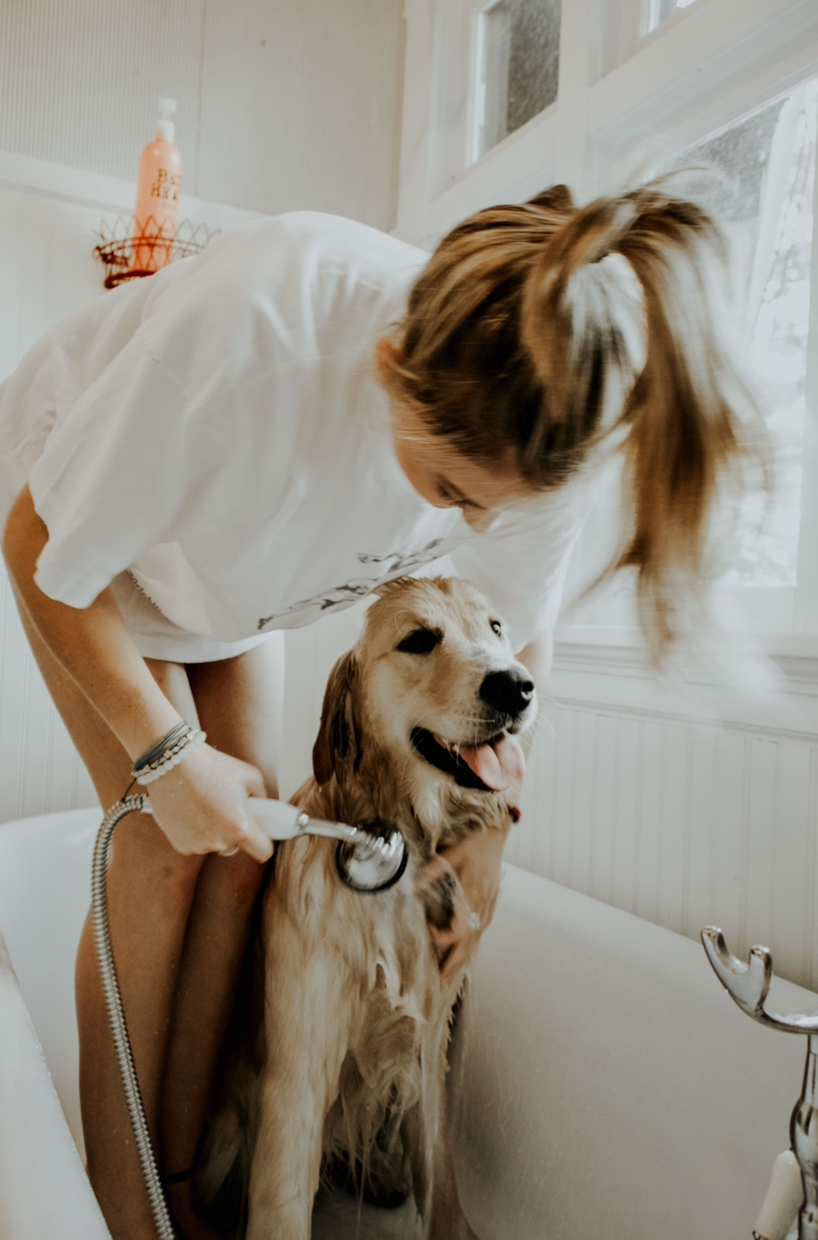Dog hair goes through regular stages of growth, maturity, and shedding but if your dog is losing hair in patches or shedding fur at a much faster rate than normal, there could be a medical condition behind it. One frequent cause of fur loss is allergies; as veterinarian Dr. Chris Cook told USA Today, dogs are exposed to allergens all day, because most harmful substances are on the floor and grass – surfaces where they tend to spend considerable time on. Treatment of allergy-cause hair loss usually involves antihistamines, immuno-suppressants, or topical remedies, but it is important to ensure that hair loss isn’t caused by another condition or by poor nutrition. In this post we highlight a few reasons why shedding may be a problem and discuss the remedies for each condition.
Fungal Infections can Cause Hair Loss
Yeast infections can cause your dog’s skin to break out in scales, become smelly, or lose patches of hair. Conditions that contribute to this type of skin infection include diabetes, dietary imbalances, and inflammation in the skin. A visit to the vet is vital to rule out these conditions, and to receive treatment if required. If it is an acute condition, your vet may recommend more frequent shampooing and/or the use of a topical or oral treatment. Be patient and consistent, as it may take several weeks for pets to heal completely.
Nutritional Deficiencies
Many store-bought dog foods contain fillers and poor quality of protein, including skin, feathers, and beaks. The plethora of poor quality ingredients can create a toxic overload of your dog’s organs, and the result may be a coat that is anything but abundant and shiny. Opt for biologically appropriate food and if your dog is allergic, talk to your vet about an elimination diet, which will enable you to identify offensive foods and ingredients. Most dog foods on the market do not include human grade ingredients, so imagine your pooch eating food that is made from byproducts and expecting them to be at their optimal health.
Mange
Mange, caused by mites taking over your dog’s skin, cause scaliness and itchiness. If you think your dog has mange it is important to act quickly, because severe cases can cause scarring and in this case, the fur simply won’t grow back. Mites can quickly spread to other pets and to people. The treatment for mange usually includes medication, though the latter can be toxic so you will need to follow your vet’s instructions to the letter. Your dog might instead prescribe insecticide shampoo or a spot-on treatment. The choice of treatment will depend on the type of mite detected by your vet when checking your dog’s skin.
Alternative Solutions:
In addition to upgrading your dogs diet and eliminating possible sources of allergies it may also require you to do make some changes in your dog’s internal and external landscape. Colloidal silver and CBD oils is a natural anti-fungal, anti-viral and antibacterial that can kill many of the pathogens that could be contributing to your dogs hair loss. Simply putting a few drops in their water daily and/or on the infected area can be of great help. Remember, different sizes of dogs may require modifying the dosage. Also, cleaning your home (especially areas where your dog spends a lot of time) with eco-friendly products may help assist with this. You’d be surprised with how many owners rarely wash their dogs bed, vacuum their couches or change their duvet covers. We also recommend getting a dead sea mineral mask every now and then to have your dog get mineralized and extract some of the possible toxins ready to be pulled out of the skin!
Allergies, fungal infections, mange, and nutritional issues are just a few reasons why your dog may break out in bald spots. There are more serious issues that cause balding as well, though, including hypothyroidism and Cushing’s disease (in which too much cortisol is produced by the adrenal glands). A visit to your vet will rule out any serious issues and get your dog on the road to solving a problem that is often as uncomfortable or painful as it is unsightly.
Jane Wood is a regular contributor to the New York Dog Nanny Blog. To contribute an article, please contact cynthia@newyorkdognanny.com.




